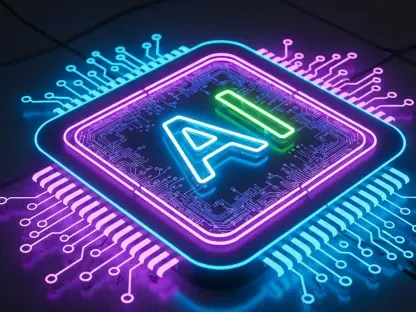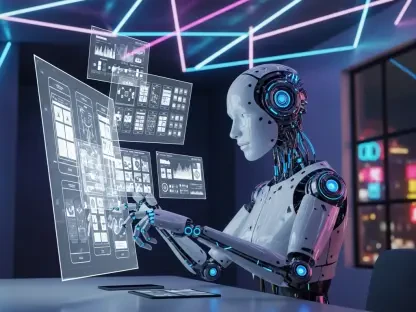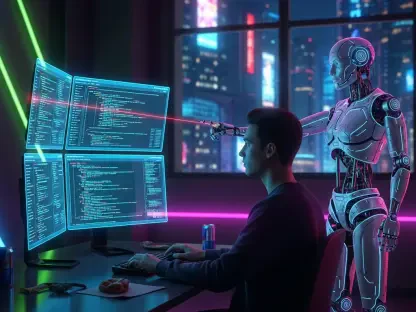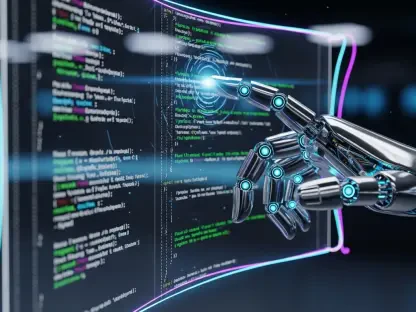The rapid advancement of technology is driving significant changes in the workforce, and the rise of artificial intelligence (AI) and no-code platforms is poised to revolutionize the way we work by 2025. These innovations promise not just to transform job roles but to enhance human capabilities, opening new job opportunities and reshaping traditional roles. As businesses and employees alike embrace these technologies, it’s crucial to understand how AI and no-code platforms will empower the workforce in the years to come.
The Role of AI in Workforce Transformation
Creation of New Job Opportunities
Contrary to the prevalent fear that AI will replace human jobs, numerous studies suggest that AI is set to create millions of new opportunities by enhancing human capabilities. This enhancement will be accomplished through AI-powered tools and platforms capable of taking over repetitive tasks, thereby allowing employees to focus on higher-value activities. By 2025, it is predicted that AI will create around 97 million new job roles globally, such as AI ethics specialists, machine learning engineers, and AI trainers. These roles will stem from the growing need to manage, improve, and maintain AI systems.
In addition to generating new job roles, AI will significantly influence existing ones, reshaping traditional job descriptions and responsibilities. For instance, roles in marketing, healthcare, and logistics will see a transformation as AI tools provide insights, predictive analytics, and automation capabilities. Marketers will use AI to analyze vast amounts of data and predict consumer behavior, healthcare professionals will leverage AI to diagnose diseases more accurately, and logistics managers will employ AI to enhance supply chain efficiency. These changes will result in a dynamic, innovative workforce better equipped to handle future challenges.
Enhancing Human Capabilities
The true power of AI lies in its ability to augment human capabilities rather than merely replace human effort. This augmentation comes in various forms, such as agentic AI, predictive AI, and generative AI, each offering specific benefits in the workplace. Agentic AI automates repetitive tasks, reducing errors and enhancing consistency, which allows employees to devote their time to more strategic and creative endeavors. Predictive AI, on the other hand, uses data analysis to provide actionable insights, aiding in strategic decision-making processes. These insights help businesses anticipate market trends and make informed decisions to stay competitive.
Generative AI accelerates content creation and workflow efficiency by producing content, code, and designs based on pre-existing data and algorithms. This type of AI can draft reports, create marketing materials, or even develop software applications, freeing up valuable time for employees to focus on other tasks. By integrating these AI capabilities, businesses can foster an environment where continuous innovation and agile problem-solving become the norm, leading to a more productive and satisfied workforce.
The Impact of No-Code Platforms on Business Efficiency
Democratizing Technology
No-code platforms are designed to enable individuals without extensive coding knowledge to develop applications and automate workflows. This democratization of technology empowers a broader range of employees, often referred to as “citizen developers,” to contribute to digital transformation initiatives within their organizations. By 2025, no-code platforms will have drastically reduced the dependency on specialized developers, allowing companies to swiftly adapt to market changes and respond to customer needs. These platforms not only accelerate innovation but also reduce time-to-market, enhancing overall operational efficiency.
Furthermore, empowering employees to become citizen developers fosters a culture of innovation and collaboration. When employees from various departments can create and implement their own solutions, it minimizes bottlenecks associated with traditional software development processes. This shift not only leads to faster problem-solving but also ensures that the solutions are closely aligned with the specific needs of the business, resulting in superior customer experiences. Additionally, the reduced need for extensive coding knowledge lowers the barrier to entry, making technology more accessible to a wider range of employees.
Enhancing Operational Efficiency
The integration of AI into no-code platforms amplifies their potential by incorporating advanced AI patterns like agentic, predictive, and generative AI into the development process. These patterns allow citizen developers to create more sophisticated, adaptive systems that can automate complex tasks and provide valuable insights. For example, a no-code platform might enable a marketing team to build an AI-driven application that predicts customer trends based on real-time data, optimizing marketing strategies and improving customer engagement. Such applications streamline workflows and enable organizations to operate more efficiently.
The synergy between AI and no-code platforms not only enhances operational efficiency but also contributes to talent development within organizations. As employees become more adept at leveraging these technologies, they acquire new skills that are increasingly valuable in the modern job market. This continuous skill development ensures that the workforce remains dynamic and adaptable, ready to tackle future challenges. Ultimately, the combination of AI and no-code platforms offers organizations a significant competitive advantage by fostering an agile, innovative, and highly skilled workforce.
The Evolving Workforce Landscape
A Shift Towards High-Value Activities
As AI and no-code platforms take over mundane and repetitive tasks, employees will have more opportunities to engage in high-value activities that require human creativity, critical thinking, and strategic input. This shift is expected to lead to more fulfilling career paths, as employees find themselves working on projects that have a more significant impact on their organizations and society at large. By 2025, the workforce will likely see a greater emphasis on roles that involve problem-solving, innovation, and human-centric skills, such as empathy and communication.
Moreover, this evolution will necessitate a change in how businesses approach employee training and development. Companies will need to invest in upskilling and reskilling programs to ensure that their employees are equipped with the necessary skills to thrive in an AI-driven environment. This includes not only technical skills related to AI and no-code platforms but also soft skills like adaptability, creativity, and effective communication. By fostering a culture of continuous learning, organizations can ensure that their workforce remains competitive and capable of driving sustained growth in the AI era.
Fostering an Agile and Innovative Workforce
Technology is advancing at an incredible pace, driving significant changes in the workforce. By 2025, the rise of artificial intelligence (AI) and no-code platforms is set to revolutionize our work methods. These innovations promise not only to transform job roles but also to enhance human capabilities, creating new job opportunities while reshaping traditional roles. Employees and businesses are increasingly adopting these technologies, making it crucial to understand how AI and no-code platforms will empower the workforce in the coming years. AI, with its ability to process vast amounts of data and perform tasks previously handled by humans, can streamline workflows and allow employees to focus on more strategic and creative endeavors. No-code platforms, on the other hand, enable individuals without extensive technical expertise to build applications and automate processes, democratizing technology and fostering innovation. As we move towards 2025, the integration of these technologies will likely lead to a more efficient, innovative, and dynamic workforce, positioning both businesses and employees to thrive in the evolving landscape.









